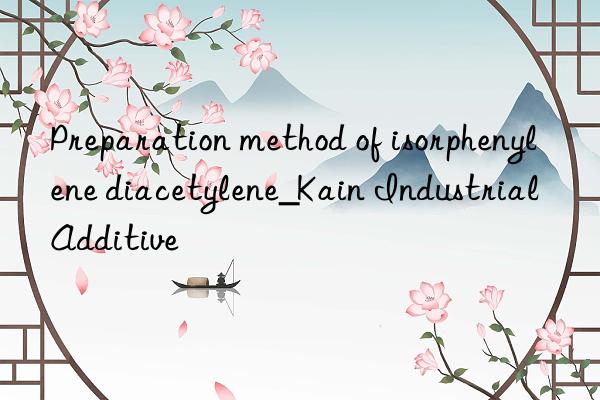
Background and overview[1]
Mesophenylene diacetylene has very important uses in pharmaceutical synthesis, liquid crystal materials, aerospace materials, etc.; the industrial production of high-purity m-phenylene diacetylene is very difficult. There are methods to use m-dibromobenzene as raw material, and 2- Methyl-2-hydroxybutyne undergoes a hack reaction in the presence of a palladium catalyst, and then hydrolyzes to obtain isophenylenediacetylene. This method uses a palladium catalyst, the reaction conditions are harsh, the catalyst cannot be recycled, and the industrialization cost is high. There are reports in the literature that mixed divinylbenzene is used as raw material, and after bromination, it is eliminated to obtain mixed diethynylbenzene, which is then separated. This method is difficult to obtain high-purity resorcinol and cannot meet the purity requirements.
Preparation[1]
In the synthesis method of isophthalic diacetylene, when preparing 1,3-phenylenediacrylic acid, isophthalaldehyde and malonic acid are dispersed in toluene at room temperature (25°C), and a catalytic amount of pyridine is added dropwise. There is basically no reaction without heating. If the temperature is raised to 40-50°C, the reaction will occur but the reaction is very slow. When the temperature reaches 80°C, the reaction will be very fast and the reaction will be completed in 3 hours. The reaction will be faster when the temperature is raised, but the system will reflux violently and there is a risk of material flushing. Therefore, the 80°C reaction was chosen; the reaction system was dissolved first, and solids were produced during the reaction. After the reaction, a large amount of solids were produced in the system, and HPLC traced isophthalaldehyde less than 0.5%. Cool to room temperature, and filter to obtain a white solid. The product purity is usually 95%. Above, the yield is over 95%.
1) Add 670 ml of toluene to a 1-liter bottle, then add 134 grams of isophthalaldehyde, 229 grams of malonic acid and 4 grams of pyridine, stir evenly, raise the temperature to 80 degrees, react for 3 hours, and liquid phase Track until the peak area of the raw material isophthalaldehyde is less than 0.5%. After cooling to 25 degrees, filter and dry to obtain 210 grams of white powdery solid with a purity of 98.2% and a yield of 96%;
2) Add 210 grams of 1,3-benzenediacrylic acid into a 2-liter reaction bottle, then add 1050 ml of acetic acid, heat to 40 degrees, slowly add 308 grams of bromine dropwise, and complete the dropwise addition in 2 hours. , keep the temperature at 40 degrees for 1 hour, and follow the liquid phase until the peak area of the raw material 1,3-phenylenediacrylic acid is less than 0.5%. After cooling to 25°C, filter, wash with water until neutral, and dry to obtain 470g of a white powdery solid with a purity of 92 %, yield 90.3%;
3) Add 1410 ml of dimethyl sulfoxide into a 3-liter reaction bottle, add 470 grams of 2,3,2',3'-tetrabromo-isophthalic acid methyl ester, and add 482 grams of potassium carbonate in batches. If gas is generated, wait for the bubbles to disappear completely, then raise the temperature to 120 degrees and keep the reaction for 4 hours. The liquid phase will be followed until the peak area of the intermediate is less than 1%. After the reaction is completed, the temperature will be lowered to 25 degrees, filtered, and 1 liter of ethyl acetate will be added to the filtrate. Wash twice with 1 liter of saturated brine, dry the organic phase, filter, and concentrate to obtain a crude product. The crude product is distilled to obtain 90 g of a light yellow liquid with a purity of 98.5% and a yield of 81.8%.
Main reference materials
[1] CN201510958885.0 Resorphenylene diene synthesis method

 微信扫一扫打赏
微信扫一扫打赏

